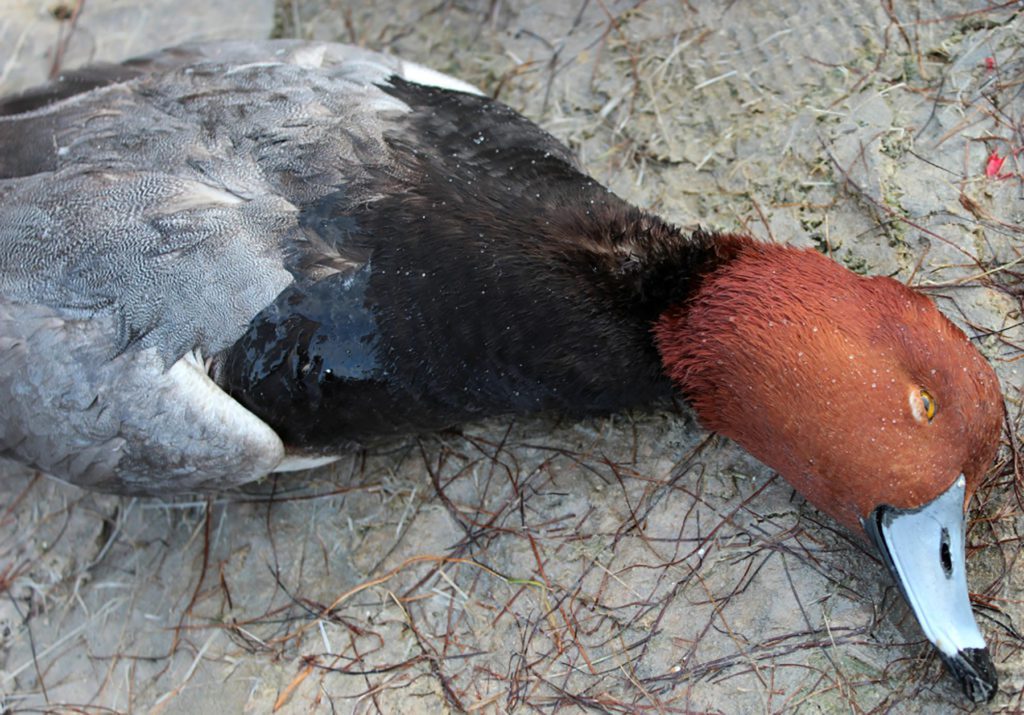
Youth-only Duck Season Begins Oct. 31 in South Zone
By Will Leschper
The COVID-19 pandemic threw duck and goose hunting for a lurch in the spring and the overall outlook is somewhat murky. For the first time in its 65-year history, the Waterfowl Breeding Population and Habitat Survey conducted by the U.S. Fish and Wildlife Service, Canadian Wildlife Service and state and regional partners was canceled due to coronavirus restrictions.
The spring survey and its data are used to estimate breeding populations and guide harvest management decisions for waterfowl species across the country, including the Central Flyway and Texas. The cancellation of the survey will create a one-year gap in the estimates and overall long-term data was used in its place to make harvest management decisions.
Among changes affecting waterfowl enacted by the TPW Commission for upcoming seasons are decreasing the daily bag for scaup from three to one in all zones, decreasing the daily bag for light goose from 20 to 10 during the regular season in both zones and shifting goose seasons (and the light goose conservation season) in the western zone one week later.
Kevin Kraai, TPWD waterfowl program leader, noted that when it comes to the waterfowl outlook and estimates, hunters should understand just how varied the ecosystems are within the state.
“Texas is about as diverse a landscape as there is in the country for waterfowl hunting,” Kraai said. “The range of habitat from playa lakes up in the Panhandle to the river bottoms in East Texas to the bay systems along the Gulf Coast is extraordinary. That’s why it’s important to have different data points that we can compare for each distinct place to hunt.”
Third-highest midwinter duck estimate in Texas
Kraai said that in looking at the state midwinter waterfowl survey conducted annually by Texas biologists, several things stand out.
“Overall, the good news is that it was our third-highest midwinter estimate for ducks in 24 years. So as a state, we had whole lot of ducks within our boundaries. We kind of knew that going in conditions were good for waterfowl around the state. We had a roughly 17% increase in the overall state duck estimate from the previous year; the overall duck estimate was about 4.5 million,” Kraai said. “When you’re talking about the percentage of Central Flyway ducks being counted in Texas, that figure has been increasing for the past 24 years. The only species that haven’t been on an increasing trend making it into our state are mallards and light geese.”
Kraai noted that the Gulf Coast has remained the No. 1 player in the state when it comes to the most prevalent winter habitat with an estimate of about 1.7 million of the midwinter total.
“The only negative to that number is it’s being driven almost entirely by one species, which is redheads,” Kraai said. “A little over half of the birds detected on the survey there were redheads.”
Don’t overlook South Texas brush country
One area that many hunters often overlook is the South Texas brush country. However, Kraai noted, that area is desirable to waterfowl, especially if man-made water sources like stock tanks and stock ponds are holding water.
“We talk a lot about human disturbance in traditional duck hot spots so in places like the Gulf Coast, it’s a really easy flight for ducks that are being pressured in the bay systems to move into areas like the vast ranches in South Texas that are mostly utilized for deer and quail hunting and cattle ranching,” Kraai said. “The same can be said for areas up in the Rolling Plains and the Panhandle that are near large agricultural fields that the birds can easily access if they get hunting pressure elsewhere. We’re certainly birds change their distribution in response to landscape changes as well as human disturbance.”
Important Dates
Duck
North Zone
Regular season: Nov 14 — 29, 2020 & Dec 5, 2020 — Jan 31, 2021
Youth-only: Nov 7 — 8, 2020
South Zone
Regular season: Nov 7 — 29, 2020 & Dec 12, 2020 — Jan 31, 2021
Youth-only: Oct 31 — Nov 1, 2020
High Plains Mallard Management Unit (HPMMU)
Regular season: Oct 31 — Nov 1, 2020 & Nov 6, 2020 — Jan 31, 2021
Goose
East Zone
Light & dark geese: Nov 7, 2020 — Jan 31, 2021
Light goose conservation order: Feb 1 — Mar 14, 2021
West Zone
Light & dark geese: Nov 14, 2020 — Feb 14, 2021
Light goose conservation order: Feb 15 — Mar 14, 2021



